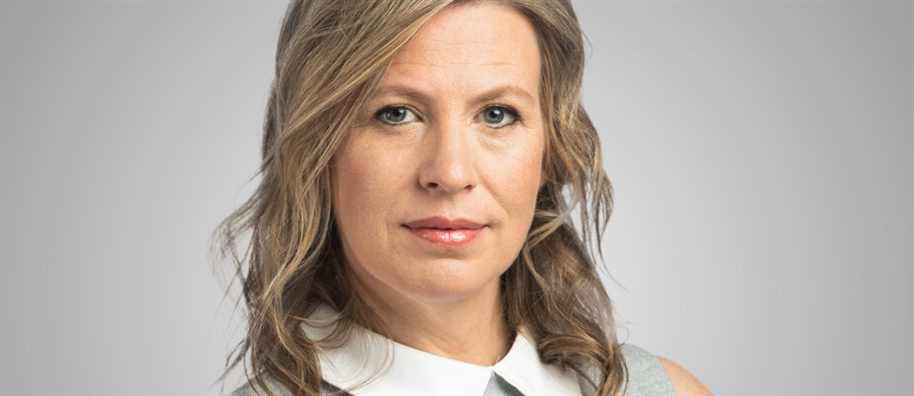In Quebec, a group of young blacks gathered in a park at nightfall, we call that: Quebec friends.
That’s what the government ad says.
In Quebec, a group of young blacks gathered on Grande Allée in the middle of the night, we call them: victims of police brutality.
This is what the images of the muscular arrest say, which spread like wildfire on social networks on Sunday, then in the media.
The young man is called Pacifique Niyokwizera. Peaceful, like a hope. That of her parents, who fled violence in Uganda eight years ago. They chose the Limoilou district of Quebec. To have peace.
Lo and behold, on a snowy November night, their 18-year-old son was beaten up by the police.
The video shows Pacific Niyokwizera tackled to the ground, face down. He doesn’t move any more. An agent continues to beat him. With his boot, an agent sends snow to his face.
“They were squeezing my throat. I couldn’t breathe, ”said Pacifique Niyokwizera to my colleague Mayssa Ferah.
I couldn’t breathe anymore. I can’t breathe.
This is what George Floyd said, suffocated under the knee of a Minneapolis police officer, on May 25, 2020. He said it more than 20 times, before taking his last breath.
It has become the slogan of Black Lives Matter. I can’t breathe.
Pacific Did Niyokwizera think about it, his head stuck in the snow of the Grande Allée? Did he think of dying?
Of course, Quebec is not Northern Alabama, whatever a certain professor from the University of Ottawa may think.
It is also true that we still know very little about the circumstances that led to this arrest.
But looking at these poorly framed images, you can’t help but think about it. White police brutally hold a young black to the ground. Around, people are screaming, panicking. And film.
You see these images and you can’t help but think of George Floyd.
We think about what could have happened if the policeman had squeezed Pacific Niyokwizera’s throat a little harder, a little longer.
And then, we tell ourselves that there would never have been public outrage if the scene had not been filmed. As for George Floyd. As for Joyce Echaquan.
No media would have talked about it. The opposition parties would not have demanded an independent investigation. The five police officers have never been suspended until further notice.
We were treated to a perfect example of racial profiling, according to Pacific lawyer Niyokwizera.
It looks like that, indeed. Especially since once in the patrol car, an agent would have ordered the young man to return to Montreal …
He would have thrown that at her. “Go back to Montreal! ”
Without wanting to start a quibble, this is the kind of comment that gives ammunition to those who treat Quebec as a big village …
There is no black in the Police Department of Quebec City (SPVQ). Not a single one, out of the 853 officers of the police force. In 177 years of history, there has never been one.
The SPVQ is trying to attract them, without success. Obviously, the confidence is not there.
The white uniformity of the men in uniform certainly does not help to build this necessary trust between the police and the black community of the capital.
And what happened on Grande Allée will do nothing to improve things.
We are led to believe in an act of racial profiling. But now we learn of the existence of another muscular intervention, which occurred the same evening. With the same policemen.
Jean-Philippe St-Laurent was beaten up in the middle of a restaurant in Sainte-Foy. His face, pressed to the ground, rubbed against shards of glass, as officers tried to subdue him. He struggled in panic.
Same scenario, therefore, a few hours apart. Except this time the man was white.
Does that change anything? Maybe not.
But perhaps we are dealing with a case of Matricule 728. A case of police-pit bulls who spray people with pepper spray for a yes or a no, regardless of the color of their skin …
Perhaps, too, the agents used the force necessary to control these two men. A police intervention, it is never beautiful to see, especially when the individual strongly resists his arrest.
Punches in the ribs, we teach that to Nicolet. It’s called a diversionary method. It is legal, often even justified.
But to keep knocking when an individual is no longer moving, to throw snow in their face, to abandon them in the street at 3 a.m., far from the place of arrest, without their phone or their credit cards. …
That, I do not see how it can be justified.
We don’t know all the facts. Only an investigation can shed light on what happened. This is true for the arrest of Jean-Philippe St-Laurent, as for that of Pacifique Niyokwizera.
In the case of Pacifique Niyokwizera, the Police Brotherhood urges the public to “exercise reserve” and wait until they know the context of the arrest before drawing any conclusions.
The video, after all, only shows part of the police intervention.
It’s true. Strangely, however, the Fellowship demands that the public reserve their judgment while themselves already having a strong opinion on the matter.
“I don’t think that the color of the individual’s skin had an impact on this intervention,” said the president of the Fraternity, Martine Fortier, on Radio-Canada.
She added, as if it were a blunt argument: “By the way, the police officer who intervened with these people is an Aboriginal …”
Sorry, but that doesn’t explain anything. That doesn’t excuse anything at all.
